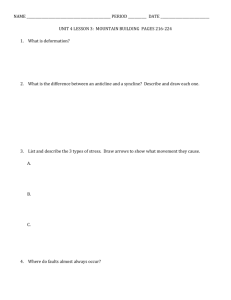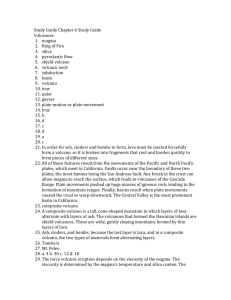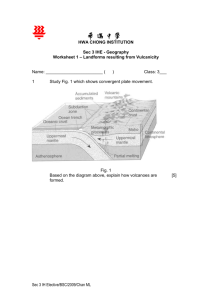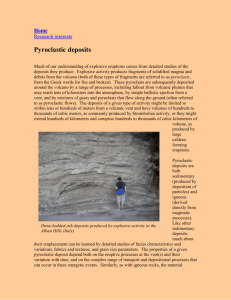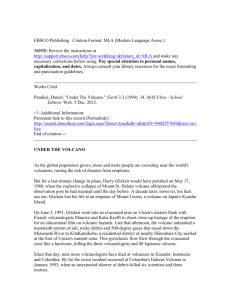32 - Cal State LA - Instructional Web Server
advertisement
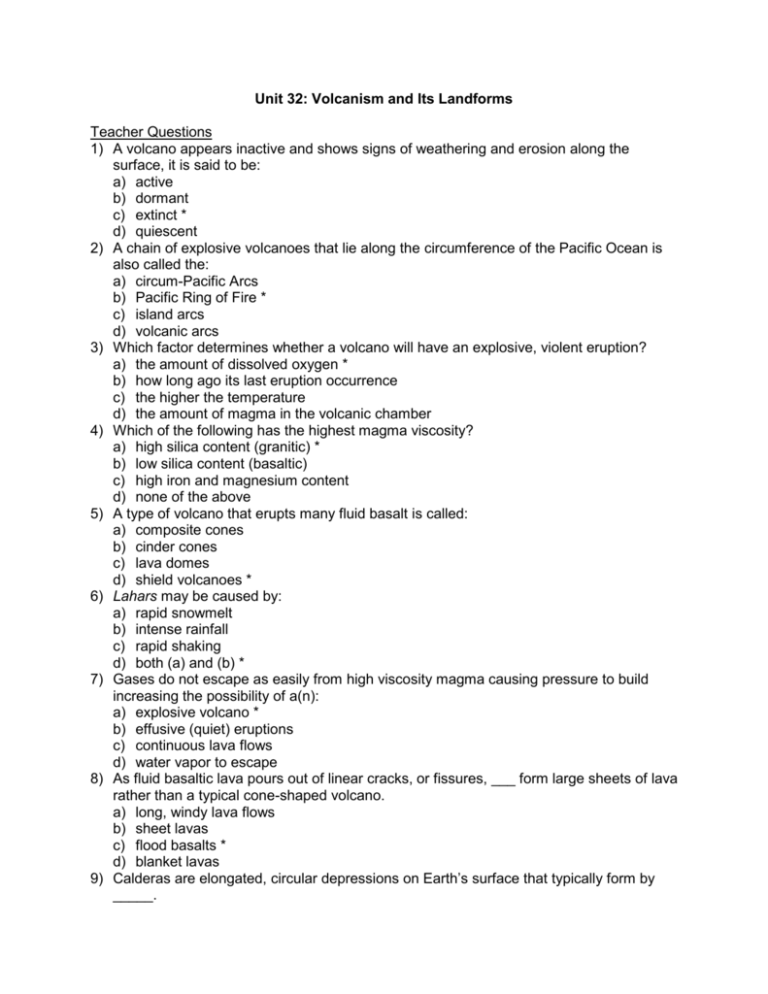
Unit 32: Volcanism and Its Landforms Teacher Questions 1) A volcano appears inactive and shows signs of weathering and erosion along the surface, it is said to be: a) active b) dormant c) extinct * d) quiescent 2) A chain of explosive volcanoes that lie along the circumference of the Pacific Ocean is also called the: a) circum-Pacific Arcs b) Pacific Ring of Fire * c) island arcs d) volcanic arcs 3) Which factor determines whether a volcano will have an explosive, violent eruption? a) the amount of dissolved oxygen * b) how long ago its last eruption occurrence c) the higher the temperature d) the amount of magma in the volcanic chamber 4) Which of the following has the highest magma viscosity? a) high silica content (granitic) * b) low silica content (basaltic) c) high iron and magnesium content d) none of the above 5) A type of volcano that erupts many fluid basalt is called: a) composite cones b) cinder cones c) lava domes d) shield volcanoes * 6) Lahars may be caused by: a) rapid snowmelt b) intense rainfall c) rapid shaking d) both (a) and (b) * 7) Gases do not escape as easily from high viscosity magma causing pressure to build increasing the possibility of a(n): a) explosive volcano * b) effusive (quiet) eruptions c) continuous lava flows d) water vapor to escape 8) As fluid basaltic lava pours out of linear cracks, or fissures, ___ form large sheets of lava rather than a typical cone-shaped volcano. a) long, windy lava flows b) sheet lavas c) flood basalts * d) blanket lavas 9) Calderas are elongated, circular depressions on Earth’s surface that typically form by _____. a) emptying of a magma chamber and subsequent roof collapse * b) gradual buildup of pyroclastic material around a volcanic vent c) the impact of a meteor collision with Earth d) a ring of volcanoes surrounding a depression 10) Another name for a pyroclastic flow is: a) lahar b) mudflow c) avalanche d) nuee ardente * 11) It is difficult for scientists to understand the evolution of ancient volcanoes (stratovolcanoes). Many times researchers can determine the degree of explosiveness and the height of the eruption column by studying the size of pyroclastic material and the distance travelled. It can be inferred that the larger the fragments erupted, the more explosive the eruption; the more explosive the eruption, the farther the distance volcanic fragments travel; and: a) the thinner the ash deposits, the longer the duration b) the farther pyroclastic material travel, the higher the eruption column * c) the thicker the pyroclastic deposit, the smaller the eruption column d) the higher the volume of pyroclastic material erupted, the shorter the duration 12) The Hawaiian Islands formed over a stationary hot spot. This means that hot molten magma from deep within the mantle erupted onto the surface of the ocean floor forming an underwater volcano, or seamount. As the volcano continued to grow, it eventually emerged above sea level forming an island arc. The first island to form over the hot spot was Kauai Island. The island sits at the northernmost section along the chain, is now an extinct volcano and contains the oldest rocks of the Hawaiian Islands. Maui is also an extinct volcano but has much younger rocks than Kauai but older than the Big Island, Hawaii. Hawaii is the southernmost island, has active volcanoes, and contains the youngest rocks of all the islands. By understanding that the Hawaiian Islands formed over a stationary hot spot, the youngest rocks are found on the actively-erupting Hawaii island, and that rocks become progressively older as you move northwest; this helps support what theory? a) Plate tectonics * b) Continental drift c) Ring of Fire d) Seafloor spreading






